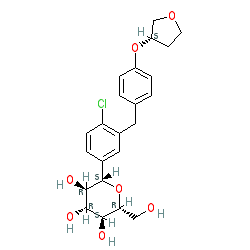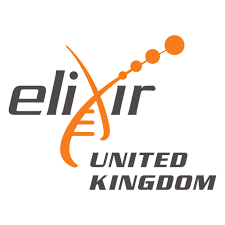GtoPdb is requesting financial support from commercial users. Please see our sustainability page for more information.
|
Synonyms: BI 10773 | Jardiance®
empagliflozin is an approved drug (FDA & EMA (2014))
Compound class:
Synthetic organic
Comment: Empagliflozin is a member of the 'gliflozin' class of drugs which inhibit reabsorption of glucose in the kidney to lower blood sugar.
It is the first glucose-lowering, antidiabetes therapy to be granted approval to reduce the risk of cardiovascular (CV) death in type 2 diabetes patients with CV disease. SARS-CoV-2 and COVID-19: Empagliflozin was added to the RECOVERY trial (NCT04381936) in July 2021, to determine if using empagliflozin to correct metabolic dysregulation caused by SARS-CoV-2 infection can protect against organ damage and improve recovery in COVID-19 patients. This was predicated by results of a study exploring dapagliflozin-mediated organ protection, which found that the drug elicited a non-significant reduction in the risk of organ failure or death in COVID-19 patients [4]. Ligand Activity Visualisation ChartsThese are box plot that provide a unique visualisation, summarising all the activity data for a ligand taken from ChEMBL and GtoPdb across multiple targets and species. Click on a plot to see the median, interquartile range, low and high data points. A value of zero indicates that no data are available. A separate chart is created for each target, and where possible the algorithm tries to merge ChEMBL and GtoPdb targets by matching them on name and UniProt accession, for each available species. However, please note that inconsistency in naming of targets may lead to data for the same target being reported across multiple charts. ✖
View more information in the IUPHAR Pharmacology Education Project: empagliflozin |
|
|||||||||||||||||||||||||||||||||||
| No information available. |
Summary of Clinical Use  |
| After being assessed in clinical trials for the treatment of type 2 diabetes mellitus (T2DM) [1], either as mono- or combination therapy (with linagliptin or metformin for example), empagliflozin was approved in August 2014 for the improvement of glycemic control in adult patients alongside diet and exercise. In February 2015 the US FDA approved the fixed dose formulation Glyxambi® (empagliflozin and linagliptin) for the treatment of T2DM. The EMA has granted marketing authorisation for the fixed-dose combination of empagliflozin plus metformin (Synjardy®) for the treatment of T2DM. A postmarket clinical trial of more than 7,000 patients with T2DM and CV disease showed that empagliflozin reduces the risk of CV death (compared to placebo) as an add-on to standard of care diabetes and atherosclerotic CV disease therapies [7]. These findings led to FDA approval in Dec 2016 for empagliflozin to be used to reduce the risk of CV death in T2DM patients with CV disease. |
Mechanism Of Action and Pharmacodynamic Effects  |
| Empagliflozin is an inhibitor of the sodium glucose co-transporter-2 (gene symbol SLC5A2), a protein responsible for renal reabsorption of blood glucose. Inhibition of the transporter promotes urinary excretion of glucose [2,5]. |
| Clinical Trials | |||||
| Clinical Trial ID | Title | Type | Source | Comment | References |
| NCT04381936 | Randomised Evaluation of COVID-19 Therapy | Phase 2/Phase 3 Interventional | University of Oxford | Empagliflozin was added to this trial in July 2021. The intention is to recruit 2500 patients who will be randomly allocated to receive empagliflozin (10mg tablet once daily) plus usual standard-of-care, to be compared against at least 2500 patients who receive usual standard-of-care. The primary outcome will be reduction in risk of death in hospitalised COVID-19 patients. Secondary evaluations will determine if empagliflozin treatment shortens the length of hospital stay or reduces the number of patients progressing to mechanical ventilation. | 6 |
External links  |
|
For extended ADME data see the following: Electronic Medicines Compendium (eMC) Drugs.com European Medicines Agency (EMA) |







